The Cornell Lab Bird Academy › Discussion Groups › Bird Photography with Melissa Groo › Practice Matching Your Gear to Your Goals
-
One major goal is clear crisp images - not easy when significantly cropping a photo to feature the bird. To that end, a couple of years ago I upgraded my camera to the D7500 and lens to the 300mm f/4 PF with a 1.4x teleconverter and the 200-500mm beast. Both produce nice sharp photos, but I may be the only person on the planet who prefers the 300mm+1.4x combo. I can carry it anywhere and hold it up in shooting position for a long time. But I still need improved sharpness on distant birdies and poorer light conditions. So using advice from Melissa's lectures, I got a gimbal head for my tripod and a beanbag for my car and for low-down shooting. You'll see a photo below from each stabilizer. The Macaulay library is new to me and its a great resource. The other day I was walking in foggy conditions and suddenly an owl flew out from the top of a spar about 200 feet off the road. Followed by another owl from the trees! Our local owls are Barred and Great Horned. I didn't even have time to raise my binocs before they were back into trees. While the underwing coloring was more pale like a Barred, the library shows several photos of the Great Horned from atop spars, while Barred owls were pictured from within trees, which is what I'm familiar with. So it could have been a Great Horned Owl, which would be a life-lister for me. But that's not a definitive sighting.


-
The goals I set for myself include learning the ability to shoot manually, and starting to wean off of auto. I have a beginner Nikon body with a nice 200-500mm Nikon lense. I'm getting great shots so far, and I put myself in great positions where I do not rely on the camera to try to make a bad scenario into a good photo. However, my goal is get that extra quality out of my shot by understanding exact what settings I am shooting with at any given time to maximize my potential.
-
I'd like to practice more patience in approaching the birds in a couple locations: my backyard, our camp on a river and a local conservation area. Equipment wise I'm in the very early stages of thinking about another camera but would first like to maximize some of the settings on the modest Canon PowerShot I have. Here are a couple photos, mockingbirds and juvenile merlin, I managed to capture last spring with a little patience and fortunate timing.


-
My goals are fairly simple. I bought myself a DSLR with two lenses (one up to 50mm, the other up to 700mm) last year and I am pretty intimidated to use it. I want to transition away from taking quick snaps on my cell phone of birds you can barely see, to "real" photographs. I want to learn the patience needed to take deliberate shots with the right focus and light so that other people can see what I see.
-
My desire to photograph birds came from wanting to observe greater detail of the bird and to better capture their behaviors. I had been working for years with a bridge camera and moved to DSLR last year fighting my intimidation and concern that the need to focus on the equipment would overtake the desire to relax and learn more about my subjects. After beginning this wonderful course I received for Christmas, I have set new/additional goals based upon what I didn't know. One of these goals is to use my car as a blind to simplify observing birds in placing other than my yard or on hikes. I simply added a sandbag to use over the car window (and to rest my camera on for easy access near a window) to my gear and I was in business. Rolling slowly down a country road yesterday on a road trip to view Sandhill Cranes, I was surprised to also see and photograph a Merlin perched in a tree and a Red-shouldered Hawk grabbing a crayfish. I'm a believer. I have a long way to go toward achieving my goals but would not have experienced these precious moments without an introduction to using a car blind. Can't wait to learn about post-production as you can see.



-
I've always enjoyed nature in any form but what pushed me into being a birder was @CarlBovisNature and @CarlBovis on twitter. His photos are fabulous. I bought his book "100 birds". I check his twitter page every day to see what is new. I asked him what camera he uses, a Sigma 150-600mm, and I bought one. Now, I just need to keep working because my photos can't compare to his!



-
My main goal is to help identify and document my observations. Producing top quality images is not a priority now, although I expect it to become increasingly important as I become more adept. I've been using a point and shoot camera (Canon Powershot ELPH 190 IS) which of course in extremely limited -- only useful for birds perched, on the ground or in the water at close range, like the White Winged Surf Scoter attached. I am attracted to the simplicity of a bridge camera, but in the end, it's too limited. So I am buying a mirrorless Olympus E-M1 Mark II from a friend.

-
I have been taking photos since I was 10 years old, just for fun. Now I have a goal. I started birding 2-1/2 years ago so I use my photographs to help me identify birds. I began photographing birds with my Canon Rebel T4i and 70-300 mm lens. I used Sport mode to photograph "birds in flight" and got some good, sharp photos. I purchased a Panasonic Lumix FZ200 bridge camera for travel (zoom to 600 mm) and was able to take good videos with it. In February 2020 I bought a Sony RX10IV bridge camera after recommendations from many people in my photo club. It has a larger sensor and is bigger and heavier than the Panasonic but should be a good travel camera. Taking videos is not as easy as with the Panasonic. I use it exclusively now but I am still trying to "figure it out." It tracks birds in flight well but most of the hand-held photos of flying birds are not tack sharp. I am short and am able to wear the Sony around my neck with my Nikon Monarch M711 8x30 binoculars just above it (I always feel like a pack horse). I have an old tripod with quick release plate so I can switch from tripod to hand held. I bought a monopod but don't really know how to use it effectively. So far my Sony RX10IV is helping me reach my goal of identifying birds. The 600 mm lens brings the birds closer than my binoculars. I get the most benefit when I look at the photos on my desktop monitor screen. I do need to improve focusing. And I want to do more video with the camera. I like the idea of having a bridge camera with a built in 600 mm zoom lens. (I don't want to carry a heavy DSLR with many lenses in a backpack. I don't like changing lenses in the field.) I am looking forward to the rest of this Bird Academy course. Thank you Melissa!

-
This lesson was informative and made some the gear terminology that definitely intimidates me more accessible; thank you! I have several goals: 1. I hope to document my bird list by getting nice shots of as many species as possible. 2. I also am inspired by telling stories with photos—showing interesting behaviors like courtship, hunting/foraging, parental care. I love an unusual or silly image that makes me stop and wonder, “What’s going on there?,” like when a bird takes an unexpected shape because of a raised crest or extended neck or the photographer's point of view (like really symmetrical head-on portraits). And 3. I hope to become more skilled at photography to deepen my understanding of and appreciation for birds! For example, I took this photo of a male cardinal feeding his fledgling sunflower seeds from my feeder, but I didn’t know that’s what was happening at the time I was taking the photos. It happened quickly and at first glance I thought maybe it was a male feeding a female as part of courtship, but because I had taken photos I could look more closely later and see that it was a juvenile, and look up the behavior. Photography has really helped my ID skills this way too. "Shoot first, identify later” was my MO when I was starting out, and now after studying my photos I can ID a lot more species in the field.
 I use a DLSR: the Canon EOS Rebel T5i with a 55-250mm zoom lens. It’s my first and only camera and it has been a dependable beginner birding camera and lens for me. I’ve been using it on the automatic settings until I learn how to play with the manual settings (hence this course), but even so, it’s been fun to use, has improved my bird identification a lot, and has given me some shots I’m really happy with.
Aperture is one thing I have never paid attention to before, but I see now my zoom lens is f/4.0 at the 55mm setting, and then reduced to f/5.6 when extended 250mm—closing to accommodate the longer focal length as Melissa said. I think I want to look into a teleconverter to take it to the next level and get more detail in my shots before I invest in any super telephoto lenses. I also have a tripod I’ve never used—it came in a bundle with lenses and other accessories when I bought the camera—which I am now looking forward to trying out.
I use a DLSR: the Canon EOS Rebel T5i with a 55-250mm zoom lens. It’s my first and only camera and it has been a dependable beginner birding camera and lens for me. I’ve been using it on the automatic settings until I learn how to play with the manual settings (hence this course), but even so, it’s been fun to use, has improved my bird identification a lot, and has given me some shots I’m really happy with.
Aperture is one thing I have never paid attention to before, but I see now my zoom lens is f/4.0 at the 55mm setting, and then reduced to f/5.6 when extended 250mm—closing to accommodate the longer focal length as Melissa said. I think I want to look into a teleconverter to take it to the next level and get more detail in my shots before I invest in any super telephoto lenses. I also have a tripod I’ve never used—it came in a bundle with lenses and other accessories when I bought the camera—which I am now looking forward to trying out. -
My preference is gravitating more towards the habitat type style, where I can frame the bird in its natural environment - which gives it a lot more context (although I have appreciation for portrait and birds in flight as well). Melissa's tips are really helpful, especially getting your 'point of view' right - ie. eye level with the bird, which often requires you to get down and 'dirt'. Looking back at my earlier work I can see the impact which this make as opposed to my many 'birds up in the tree' images, which are 'good' but really quite arbitrary! Looking to upgrade my D300 to a D850 as I am finding the D300 to be slow. Blessed to bae some good lenses - 200-400MM f/4, 600MM f/4 and 70-200 f/2.8, with 1.4x convertor.

-
I love this photo!
-
Eye to eye!
-
-
My goal is to capture sharp images of birds in flight. The birds in flight photos in McCauley, were mostly captured with a 500 or 600 prime lens. I have a Sony 200-600 5.6. I also bought a 1.4 X teleconverter, thanks to Melissa's advice and it helps a great deal. I believe I need a gimbal. Melissa, can you help me with camera settings for "birds in flight" ?
-
I am not quite sure what my goals are yet. I like taking photos in general and I love taking photos of birds, though I have never taken any classes. I definitely what a DSLR or mirrorless camera because I want the quality. A lot of the pictures I have seen and really liked have been taken with a Nikon D7500 or a Cannon EOS 7D Mark II. I am not sure yet how much I want to spend though and therefore will be looking at other options as well. I also want to get a zoom lens and tripod, and maybe a teleconverter though I will probably wait on this one. I am excited to be able to take this course and get invaluable information and tips about photography in general and especially bird photography!
-
Originally my goal was to upgrade my camera so that I would be able to capture clearer images of birds and their behaviors. My current camera, a Canon Powershot SX510 HS, is great for photographing friends and the occasional stationary bird, but I was ready to upgrade to something that at the very least, had a viewfinder. However, as I went through the exercise of looking at other people's photos and noting what gear they used, I started to remember what the whole point of it is, at least for me. I want to make really beautiful pictures that showcase birds and wildlife in their daily lives that inspire people to care about the existence of these creatures and the wild places they live. I am on a tight budget, but I keep getting drawn to images created using the Nikon D850. I love how versatile this camera is and how it captures light, color, and detail. I also love that it is durable and weather resistant. I spend a lot of time in wild places, and though I am careful with my gear, sometimes things can get a bit roughed up. I am continuing to research to try and find something cheaper, but that could achieve similar results possible with the use of fancier lenses. Other than my current little cannon, my photography experience has all been with 35 mm film cameras (I have been really dragging my feet as far as going digital). I do worry that some of the DSLR cameras may be to high-tech for me. Do any of you know of a simple and durable digital camera that makes nice images without all the bells and whistles? I don't need Bluetooth or wifi or some of the other features. I definitely would like to get one good zoom lens in the 150-600 range. I would eventually like to get a fixed lens with a teleconverter as well, but that may have to wait. I would also like to find a tripod and gimbal head that can pack down very compact. Mountainsmith makes a nice lumbar pack for carrying cameras and a few lenses, as well as some other packs that can carry a bit more. This class, as well as reading the discussions of fellow students, has been very insightful and inspiring. Thank you!
-
I started bird watching in my 20's..that is awhile ago.... but a couple of years ago I decided I wanted to start capturing them on film... digitally I mean. I started with a NikonD5600 and a 300mm lens and that suited me to start however I knew if I really enjoyed bird photography i would upgrade. I now have a D500 Nikon with a 200-500mm zoom lens and really love the increase in sharpness and quality of the photos I am getting. I have realized though after this chapter though that i have somewhat been getting by without some of what she has recommended. A backpack for when I am in the field and to protect the camera in transport, definitely a tripod, maybe a teleconverter (1.4) but I am not sure about that as the lens I have starts at f5.6 and I worry about losing too much light. So now that has me thinking about perhaps getting a fixed prime lens with a teleconverter but they are so pricey so I think the accessories are where I need to start. I think I am a bit if a generalist as a bird photographer.. if it is a good photo then I enjoy it. When I think a little deeper though anything that captures bird behaviour... a perching bird is always interesting if you have an appealing composition but I like to capture what they do.... examples like foraging, grooming, courting, nesting, territorial behaviour etc. ...anything where a moment of their life can be frozen in time. My next technical goal is to get much better at capturing birds in flight. I have had lots of not so great photos of birds in flight.. blurred, not sharp, composition off....
 but this one gives me hope... juvenile red tail hawk lifting off from being perched in a tree... took this on the weekend.
but this one gives me hope... juvenile red tail hawk lifting off from being perched in a tree... took this on the weekend. -
Great shot!
-
-
This is my second year participating in Project FeederWatch. I average 15 to 20 different species of birds every weekend. Been taking pictures with an iPhone that aren’t very impressive. Decided to to sign up for bird Photography with Melissa Groo. It is amazing the talent she has with a camera. After finishing the course will be buying a camera for all my backyard birds. Don’t know anything about cameras but believe I am leaning towards the Nikon Coolpix P1000. All the reviews says the best camera for beginner bird photography. Was going to also get a tripod for it. Believe this camera will be great for what I plan on doing with pictures taken from back yard. wondering if any body else has experience with this camera. Thanks
-
1. To capture more detail in my bird photos, especially feather structure. 2. To create a portfolio of bird photographs illustrating behaviours such as singing, flying, preening, eating. 3. To learn enough about editting RAW images to determine whether taking RAW photos is worth the processing time and file storage space in my photo collection.
-
This is a great assignment ! Kudos Melissa for suggesting this. Now I know EXACTLY which types of photographic images I want to capture ! **High quality images are a MUST for me ... so this means I need to acquire a DSLR camera body with a full size sensor. Outstanding images I capture - my goal is to display them on a backlit, wall hanging screen that is at least 24' x 36" in my home ! I love rich colors ! I now realize that I do NOT want to capture simple portraits of birds ... I want action - flying, singing, mating rituals, aggressive or defensive behavior, mothers feeding and taking care of their young, I want to capture interaction ! I want unique, natural, intimate images of birds. I get excited about extreme close ups of birds that fill the screen AND I am excited about razor- sharp and well lit images of birds in their habitat. **A 150- 500 mm Zoom lens with an F /4.5 to 5.6 aperture is what I need to start and a 1.4 or 2.0 extender. After that, I am going to have to save up and get a fixed lens 600 mm lens. **A Gillie suit is going to be a must, a pop-up "sit in" blind will be a must and a Trapagon HOKKI (lying prone) blind is going to be a must for me. I want eye level photos of waterfowl in lakes, ponds and streams... shorebirds scurrying along the shoreline ... and Owls ! I am going to have to become good at camouflage and learning how to disappear in their environment ! **These concepts are wonderful, insightful, respectful and extremely useful. This is outstanding teaching and mentoring ! Thank you Melissa !
-
I am interested in photographing local birds in southeastern Pennsylvania - I would like to use a telcconverter to increase the focal length of my 400mm sigma lens, or try to purchase a 600 mm lens - the camera body is a Nikon d5000
-
 I want to get better at capturing birds in flight. This photo was taken with Nikon D500, a recent purchase that was affordable for me and offers excellent capture action.
I want to get better at capturing birds in flight. This photo was taken with Nikon D500, a recent purchase that was affordable for me and offers excellent capture action. -
 This was taken with a mirror-less Canon Rebel T6 with a Tameron 70- 300 lens, This yellow bellied sapsucker was just hanging out in my local woods, I would love to one day maybe nave a dslr camera, with a zoom lens,I have always been a birder but i started paragraphing them when I was about 11. (i am thirteen now) And I love doing it
This was taken with a mirror-less Canon Rebel T6 with a Tameron 70- 300 lens, This yellow bellied sapsucker was just hanging out in my local woods, I would love to one day maybe nave a dslr camera, with a zoom lens,I have always been a birder but i started paragraphing them when I was about 11. (i am thirteen now) And I love doing it -
Hey, all! I'm looking for feedback on bridge cameras. I have a Sony a6400 mirrorless camera with several lenses, but am thinking about getting a bridge camera for travel. Two models I am considering are the Sony RX10IV and the Nikon Coolpix P950. The RX10 is touted as great for action so I thought it might be a good option for birds in flight, but I am wondering if it is worth the high price tag. The P950 has a smaller sensor but a higher optical zoom and smaller price tag. Does anyone have experience with either of these models to share? Thanks!
-
I use and love the Sony RX10 mIV. Several folks I bird with use the Nikon P950 or P1000.. the P1000 is huge and heavy and I would not want it, I have had good images of birds if flight, as well as pretty good images of warblers hiding in bushy trees, which means pinpoint focus is working well. The Sony has very fast focus and is weatherproof. My friend with the P950 has had some great shots with it, they are both really good for birding. My Sony has been on trips to Spain and Costa Rica and around the US in fall and winter trips and has not had temperature or moisture issues. I got really good birds in flight in Costa Rica. I read the book by Steve Ingraham (Point and Shoot Nature Photography) on how to do bird photography with the RX 10. I very highly recommend it. My Costa Rica images are here: https://larrytheller.smugmug.com/Birds-of-Northern-Costa-Rica-2020
-
I have a 6300 and recently got the P1000 for travel. The range ( as with the P950) is an amazing addition, but you will miss the speed of your 6400.
-
I have the Sony RX10IV and am very happy with it. I have not yet gotten any great pics of birds in flight (though very nice ones of stationary birds), but still figuring out on how to best use the camera. Using a tripod helped the image quality.
-
I love the Sony RX10 Mk IV. It is light and ultra portable. Plus, the autofocus is much improved, with the ability to capture birds in flight. I had the Mk. III before and it was a great camera for stationary birds.



-
-
I'm involved in a bird survey project and so when I can't be certain of the species, I would snap a few photos for later identification. This has led to an interest that goes beyond knowing which species the birds. So far I've been using Olympus EM-5II with 75-300 mm lens for its portability. Perhaps someday I'll upgrade to a DSLR to improve the quality of the images. It was in the midday when the light was bright when I saw this Squaco Heron feeding in the artificial wetland where I conduct the survey. It was very lovely seeing it there.

-
Like several others with posts below, I started to concentrate on bird photography during Covid-19 and then found many previous bird photos in my collection from the before times. I first came across Melissa Groo in Ray Hennessy's podcast, Wildlife Photo Chat. It is a great episode. (http://rayhennessy.com/wildlife-photo-chat ).
 I find it calming to head out to a park or preserve with my camera and see what birds I can find. I shoot with a Nikon D-750 and recently added a 300 mm and 1.7 teleconverter. I rented a number of lenses before settling on this combination for being lightweight with a great reach. I enjoyed the assignment to explore the Macaulay Library. It confirmed that I should be fine to shoot with my existing equipment for awhile.
I find it calming to head out to a park or preserve with my camera and see what birds I can find. I shoot with a Nikon D-750 and recently added a 300 mm and 1.7 teleconverter. I rented a number of lenses before settling on this combination for being lightweight with a great reach. I enjoyed the assignment to explore the Macaulay Library. It confirmed that I should be fine to shoot with my existing equipment for awhile. -
I've been shooting with the Nikon 800 series for the past few years with the 200-400 VR which I have carted throughout the world. I'm looking to upgrade to the Nikon prime 600 mm lens. This Adele penguin was photographed in Antarctica on Brown's Bluff.

-


 I’m a bird and nature lover who picked up binoculars for the first time at the start of COVID. I used my phone apps to ID birds... and started birdwatching a couple days a week. One day I brushed off my old Nikon D3200 with a 50-200mm lens and began snapping bird pics. Very challenging but rewarding when I get a good quality shot! Hoping this course will help me learn how to use settings rather than depend on auto mode. I started a blog to document this journey. It’s 35sparrows.com if you want to look. Pretty humble blog compared to many here! The attached were taken last weekend. I need a tripod more than anything & finally decided on Feisol 3441t because I’m tall. Very excited. I also Invested in a Tamron 15-400 lens which won’t take a teleconverter far as I can tell. It is fantastic compared to what I had before. All I really need besides that is a longer camera strap and a bag to carry the tripod and small things in. A better camera I will wait on until I am better at manual settings.
I’m a bird and nature lover who picked up binoculars for the first time at the start of COVID. I used my phone apps to ID birds... and started birdwatching a couple days a week. One day I brushed off my old Nikon D3200 with a 50-200mm lens and began snapping bird pics. Very challenging but rewarding when I get a good quality shot! Hoping this course will help me learn how to use settings rather than depend on auto mode. I started a blog to document this journey. It’s 35sparrows.com if you want to look. Pretty humble blog compared to many here! The attached were taken last weekend. I need a tripod more than anything & finally decided on Feisol 3441t because I’m tall. Very excited. I also Invested in a Tamron 15-400 lens which won’t take a teleconverter far as I can tell. It is fantastic compared to what I had before. All I really need besides that is a longer camera strap and a bag to carry the tripod and small things in. A better camera I will wait on until I am better at manual settings. -
Hi Robin, your blog is really nice, I liked especially the orioles and the night heron. Indeed, that transformation from juvenile to adult is quite spectacular. More generally, it is a pleasure to see the huge difference between the birds living here in Europe and those which you encounter during your walks. Good luck with further observations and, of course, with bird photography!
-
Read More:
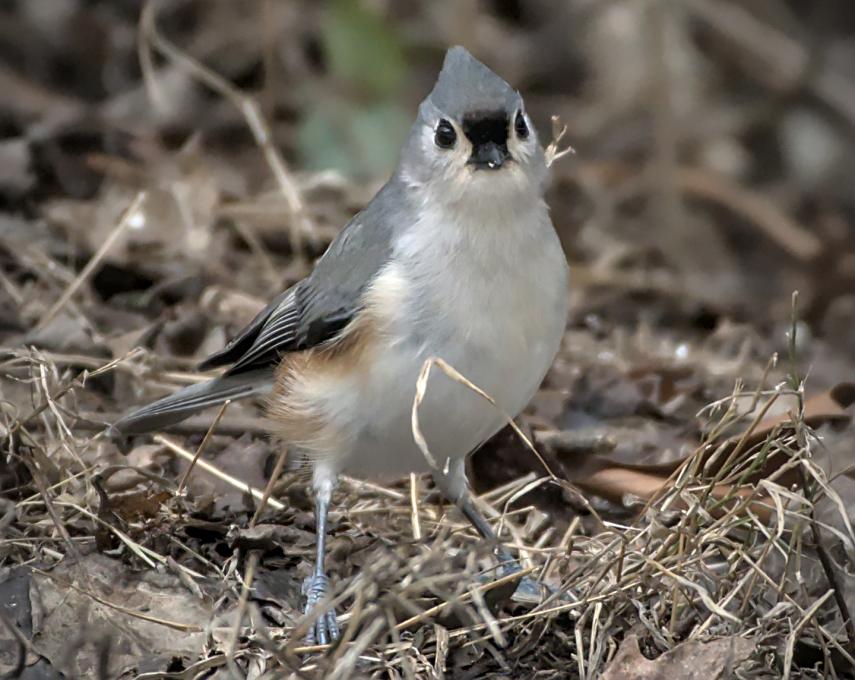


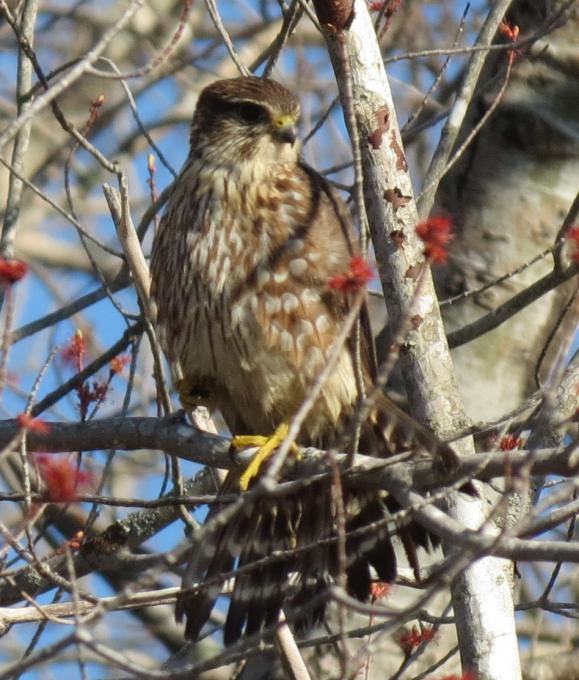
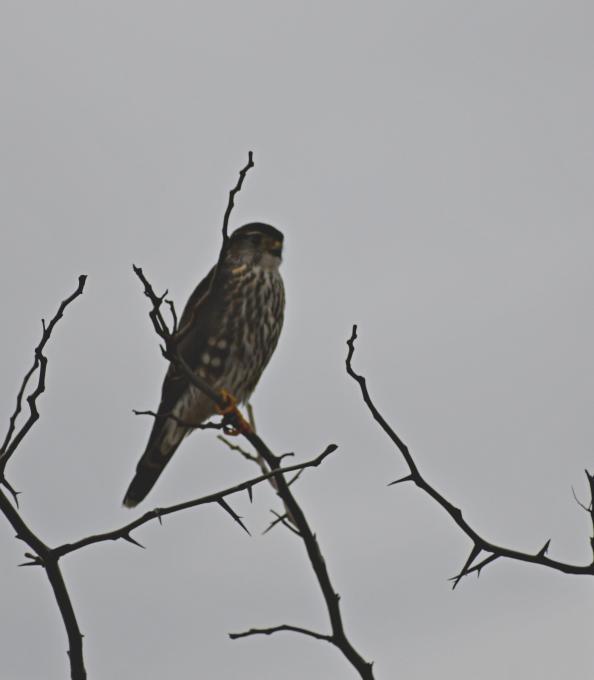

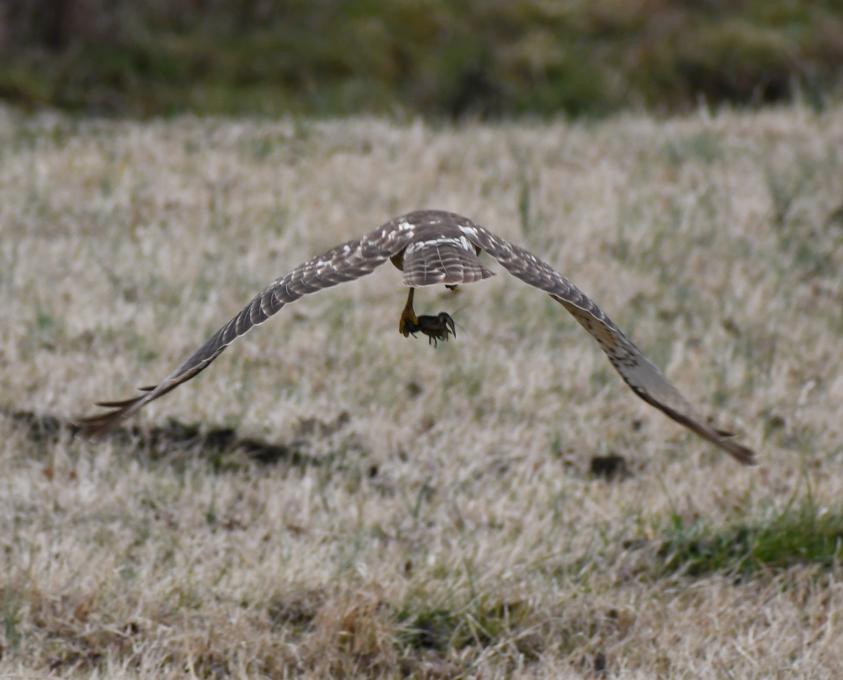

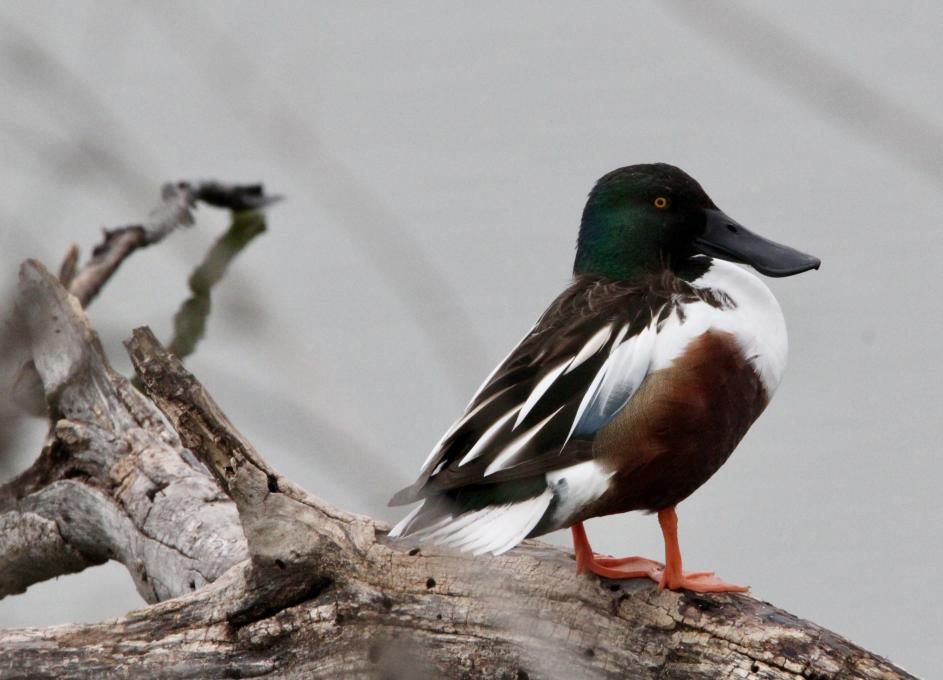

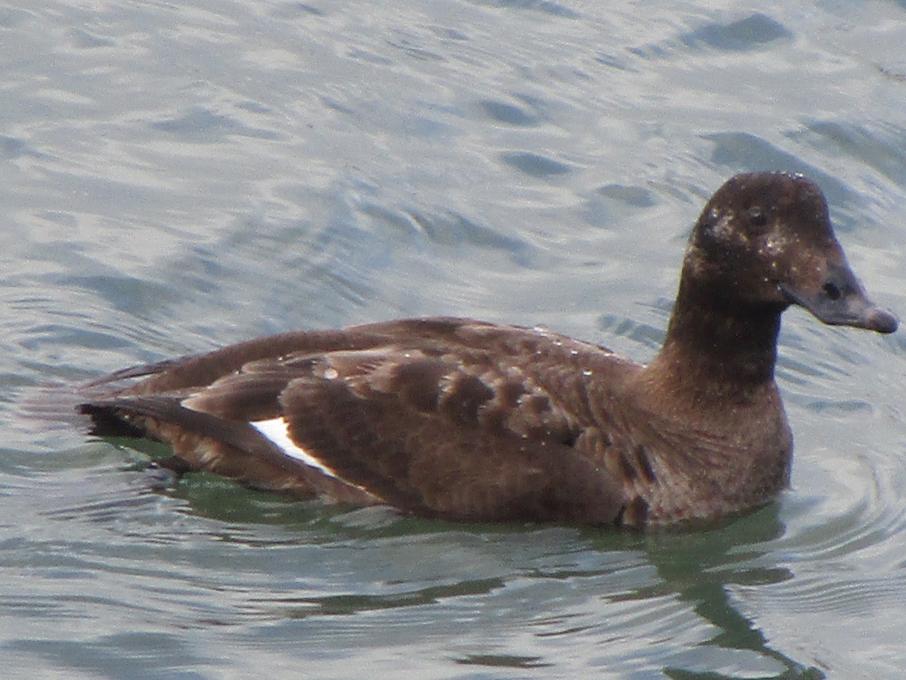
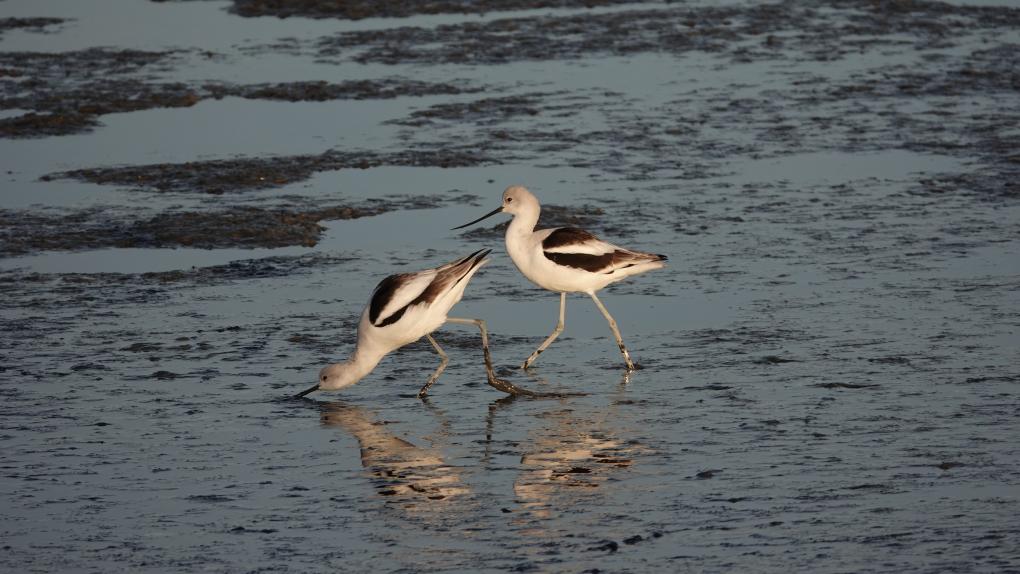
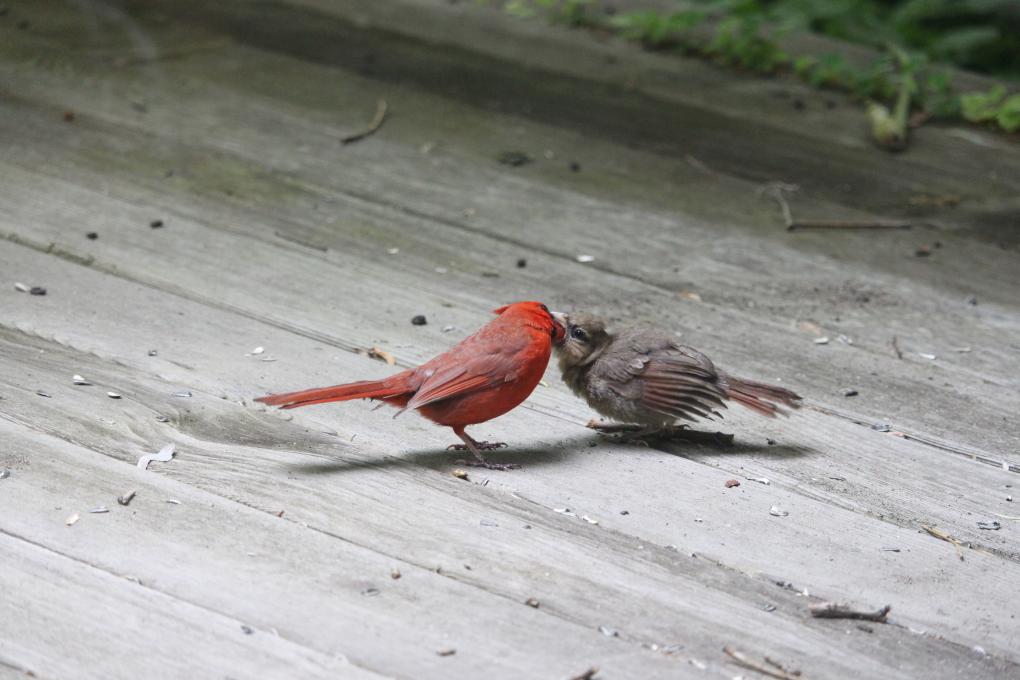 I use a DLSR: the Canon EOS Rebel T5i with a 55-250mm zoom lens. It’s my first and only camera and it has been a dependable beginner birding camera and lens for me. I’ve been using it on the automatic settings until I learn how to play with the manual settings (hence this course), but even so, it’s been fun to use, has improved my bird identification a lot, and has given me some shots I’m really happy with.
Aperture is one thing I have never paid attention to before, but I see now my zoom lens is f/4.0 at the 55mm setting, and then reduced to f/5.6 when extended 250mm—closing to accommodate the longer focal length as Melissa said. I think I want to look into a teleconverter to take it to the next level and get more detail in my shots before I invest in any super telephoto lenses. I also have a tripod I’ve never used—it came in a bundle with lenses and other accessories when I bought the camera—which I am now looking forward to trying out.
I use a DLSR: the Canon EOS Rebel T5i with a 55-250mm zoom lens. It’s my first and only camera and it has been a dependable beginner birding camera and lens for me. I’ve been using it on the automatic settings until I learn how to play with the manual settings (hence this course), but even so, it’s been fun to use, has improved my bird identification a lot, and has given me some shots I’m really happy with.
Aperture is one thing I have never paid attention to before, but I see now my zoom lens is f/4.0 at the 55mm setting, and then reduced to f/5.6 when extended 250mm—closing to accommodate the longer focal length as Melissa said. I think I want to look into a teleconverter to take it to the next level and get more detail in my shots before I invest in any super telephoto lenses. I also have a tripod I’ve never used—it came in a bundle with lenses and other accessories when I bought the camera—which I am now looking forward to trying out. 
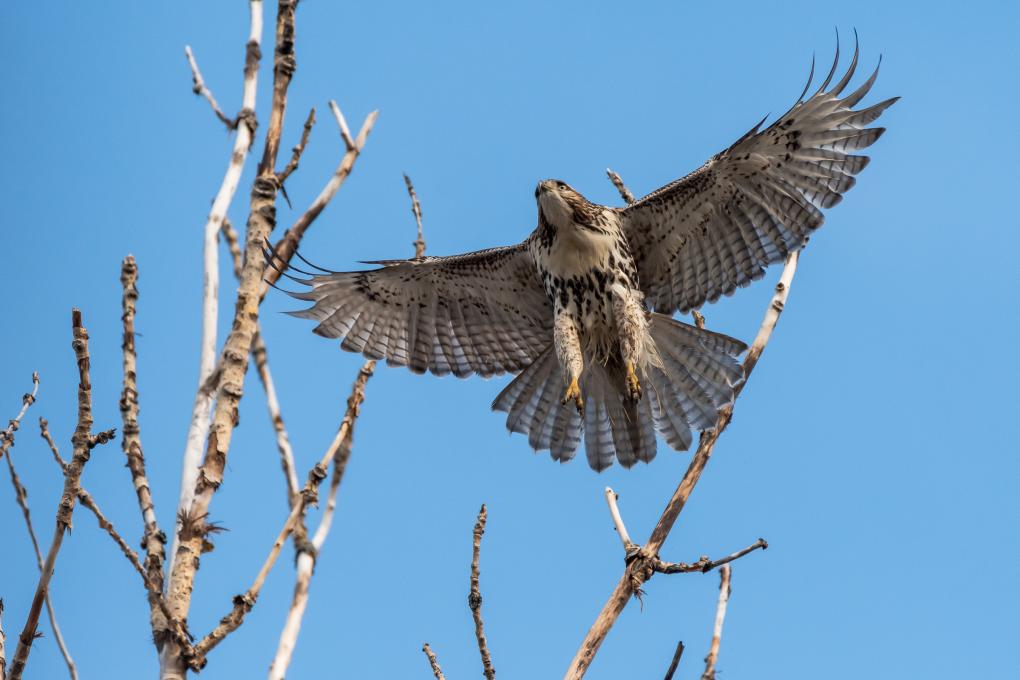 but this one gives me hope... juvenile red tail hawk lifting off from being perched in a tree... took this on the weekend.
but this one gives me hope... juvenile red tail hawk lifting off from being perched in a tree... took this on the weekend. 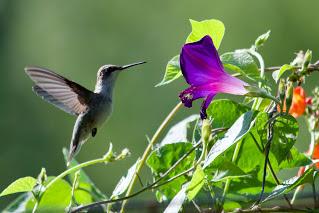 I want to get better at capturing birds in flight. This photo was taken with Nikon D500, a recent purchase that was affordable for me and offers excellent capture action.
I want to get better at capturing birds in flight. This photo was taken with Nikon D500, a recent purchase that was affordable for me and offers excellent capture action. 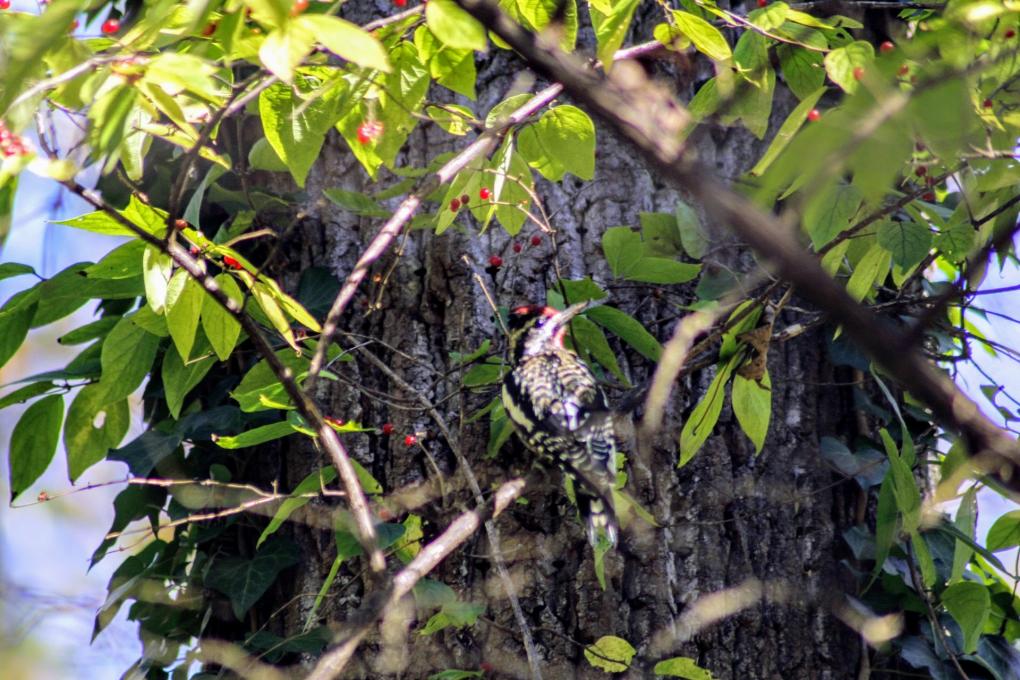 This was taken with a mirror-less Canon Rebel T6 with a Tameron 70- 300 lens, This yellow bellied sapsucker was just hanging out in my local woods, I would love to one day maybe nave a dslr camera, with a zoom lens,I have always been a birder but i started paragraphing them when I was about 11. (i am thirteen now) And I love doing it
This was taken with a mirror-less Canon Rebel T6 with a Tameron 70- 300 lens, This yellow bellied sapsucker was just hanging out in my local woods, I would love to one day maybe nave a dslr camera, with a zoom lens,I have always been a birder but i started paragraphing them when I was about 11. (i am thirteen now) And I love doing it 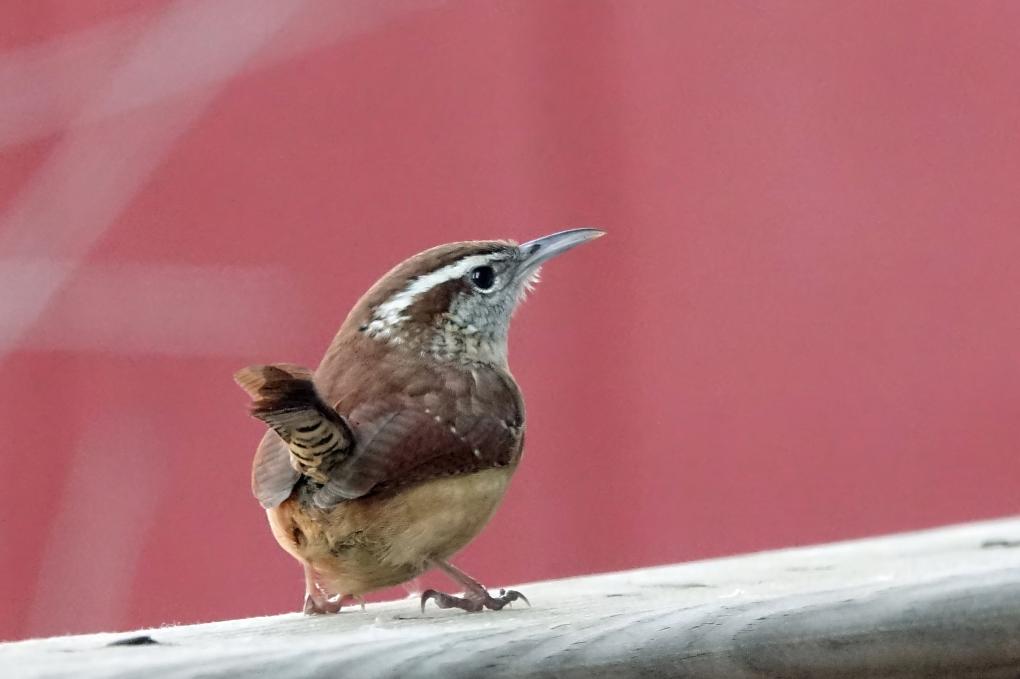
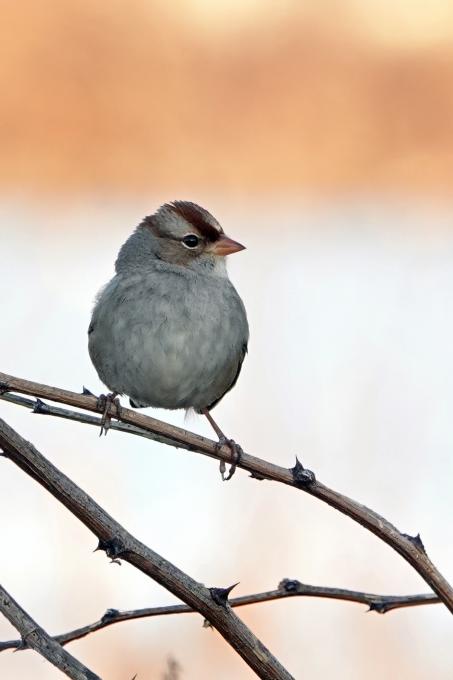
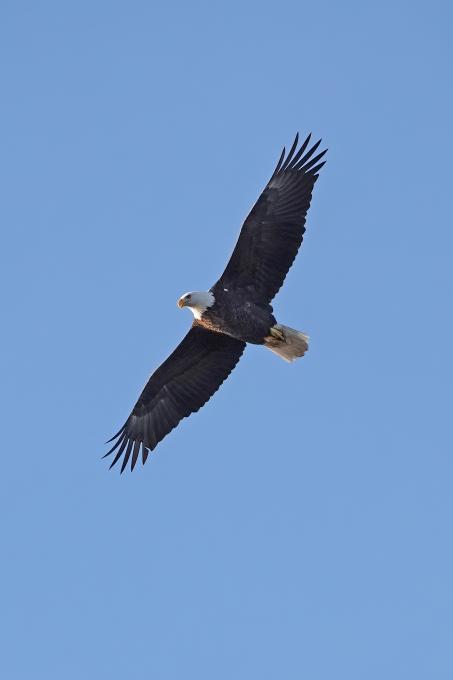

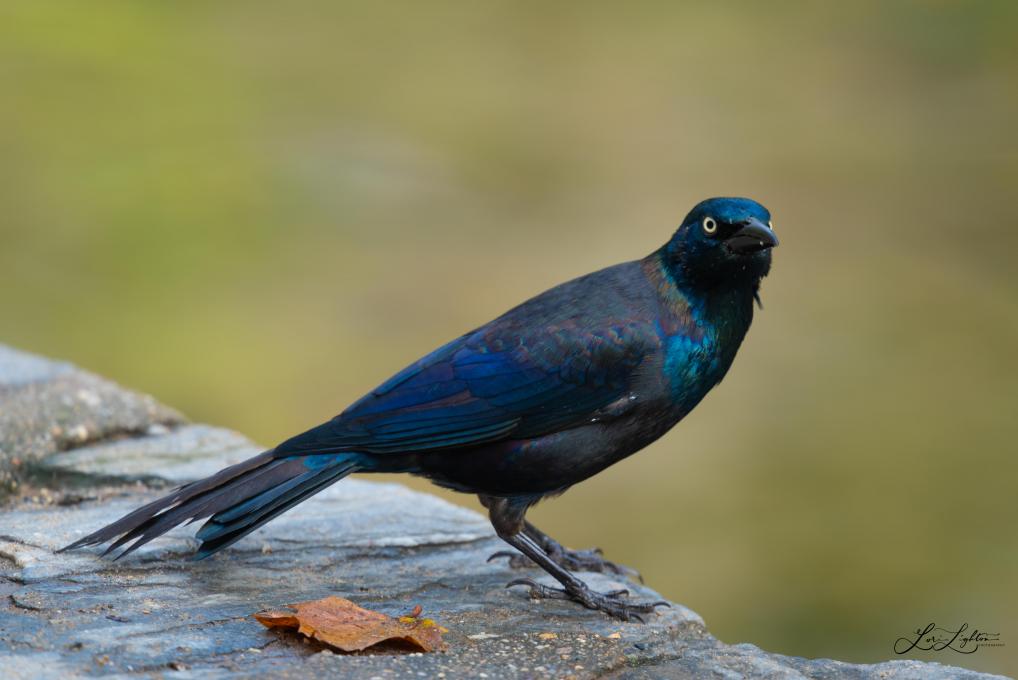 I find it calming to head out to a park or preserve with my camera and see what birds I can find. I shoot with a Nikon D-750 and recently added a 300 mm and 1.7 teleconverter. I rented a number of lenses before settling on this combination for being lightweight with a great reach. I enjoyed the assignment to explore the Macaulay Library. It confirmed that I should be fine to shoot with my existing equipment for awhile.
I find it calming to head out to a park or preserve with my camera and see what birds I can find. I shoot with a Nikon D-750 and recently added a 300 mm and 1.7 teleconverter. I rented a number of lenses before settling on this combination for being lightweight with a great reach. I enjoyed the assignment to explore the Macaulay Library. It confirmed that I should be fine to shoot with my existing equipment for awhile. 

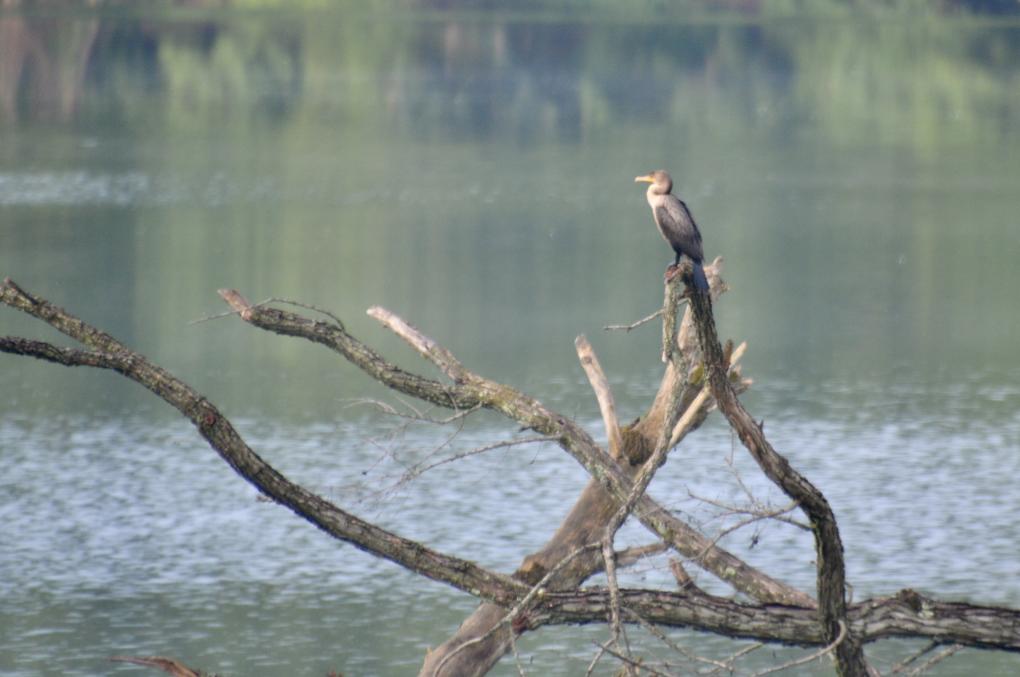
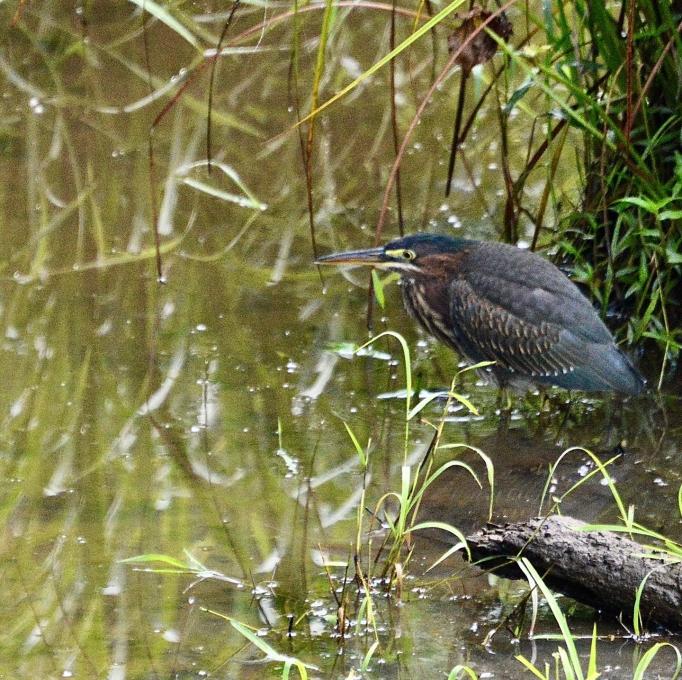 I’m a bird and nature lover who picked up binoculars for the first time at the start of COVID. I used my phone apps to ID birds... and started birdwatching a couple days a week. One day I brushed off my old Nikon D3200 with a 50-200mm lens and began snapping bird pics. Very challenging but rewarding when I get a good quality shot! Hoping this course will help me learn how to use settings rather than depend on auto mode. I started a blog to document this journey. It’s 35sparrows.com if you want to look. Pretty humble blog compared to many here! The attached were taken last weekend. I need a tripod more than anything & finally decided on Feisol 3441t because I’m tall. Very excited. I also Invested in a Tamron 15-400 lens which won’t take a teleconverter far as I can tell. It is fantastic compared to what I had before. All I really need besides that is a longer camera strap and a bag to carry the tripod and small things in. A better camera I will wait on until I am better at manual settings.
I’m a bird and nature lover who picked up binoculars for the first time at the start of COVID. I used my phone apps to ID birds... and started birdwatching a couple days a week. One day I brushed off my old Nikon D3200 with a 50-200mm lens and began snapping bird pics. Very challenging but rewarding when I get a good quality shot! Hoping this course will help me learn how to use settings rather than depend on auto mode. I started a blog to document this journey. It’s 35sparrows.com if you want to look. Pretty humble blog compared to many here! The attached were taken last weekend. I need a tripod more than anything & finally decided on Feisol 3441t because I’m tall. Very excited. I also Invested in a Tamron 15-400 lens which won’t take a teleconverter far as I can tell. It is fantastic compared to what I had before. All I really need besides that is a longer camera strap and a bag to carry the tripod and small things in. A better camera I will wait on until I am better at manual settings.